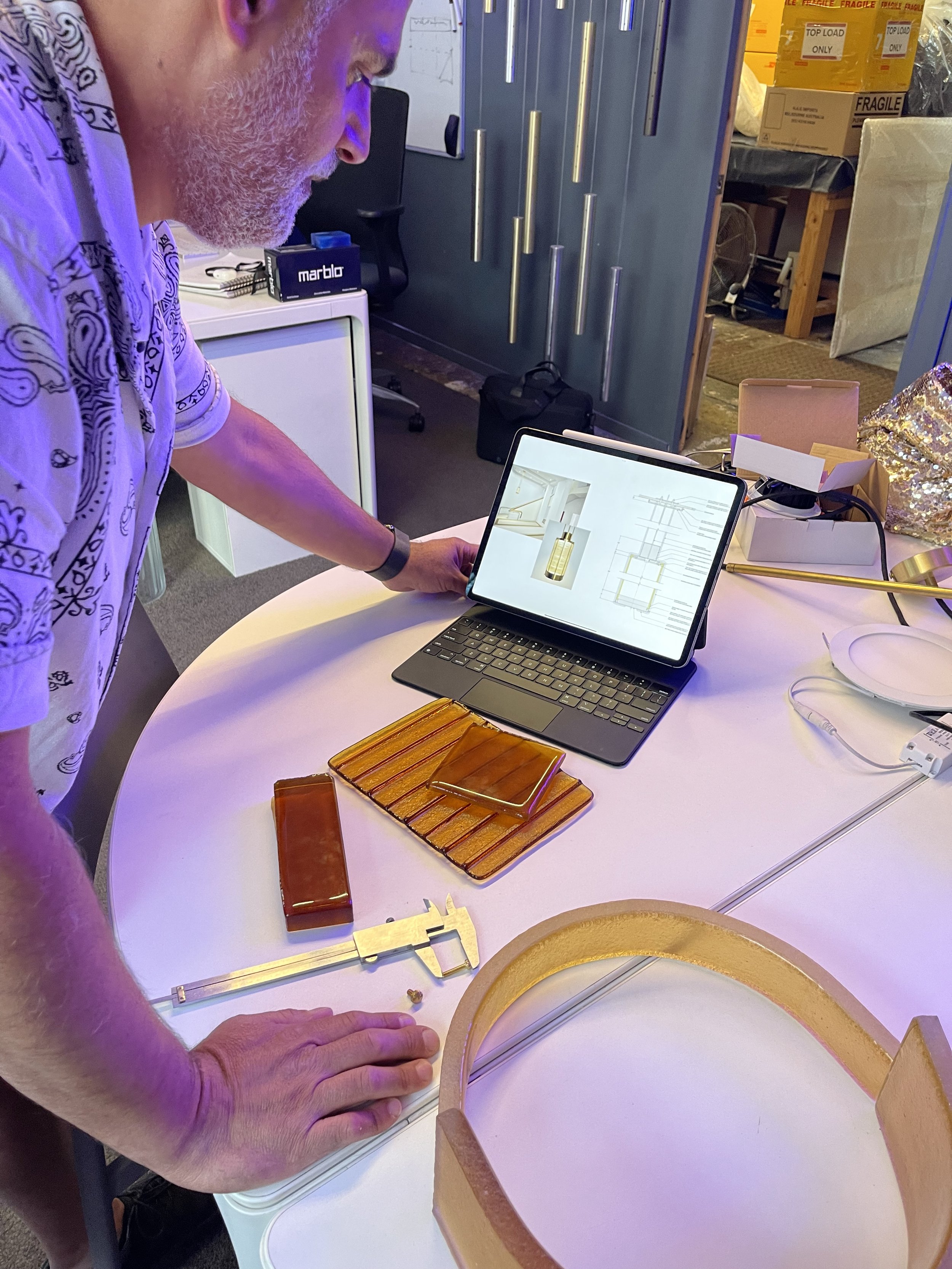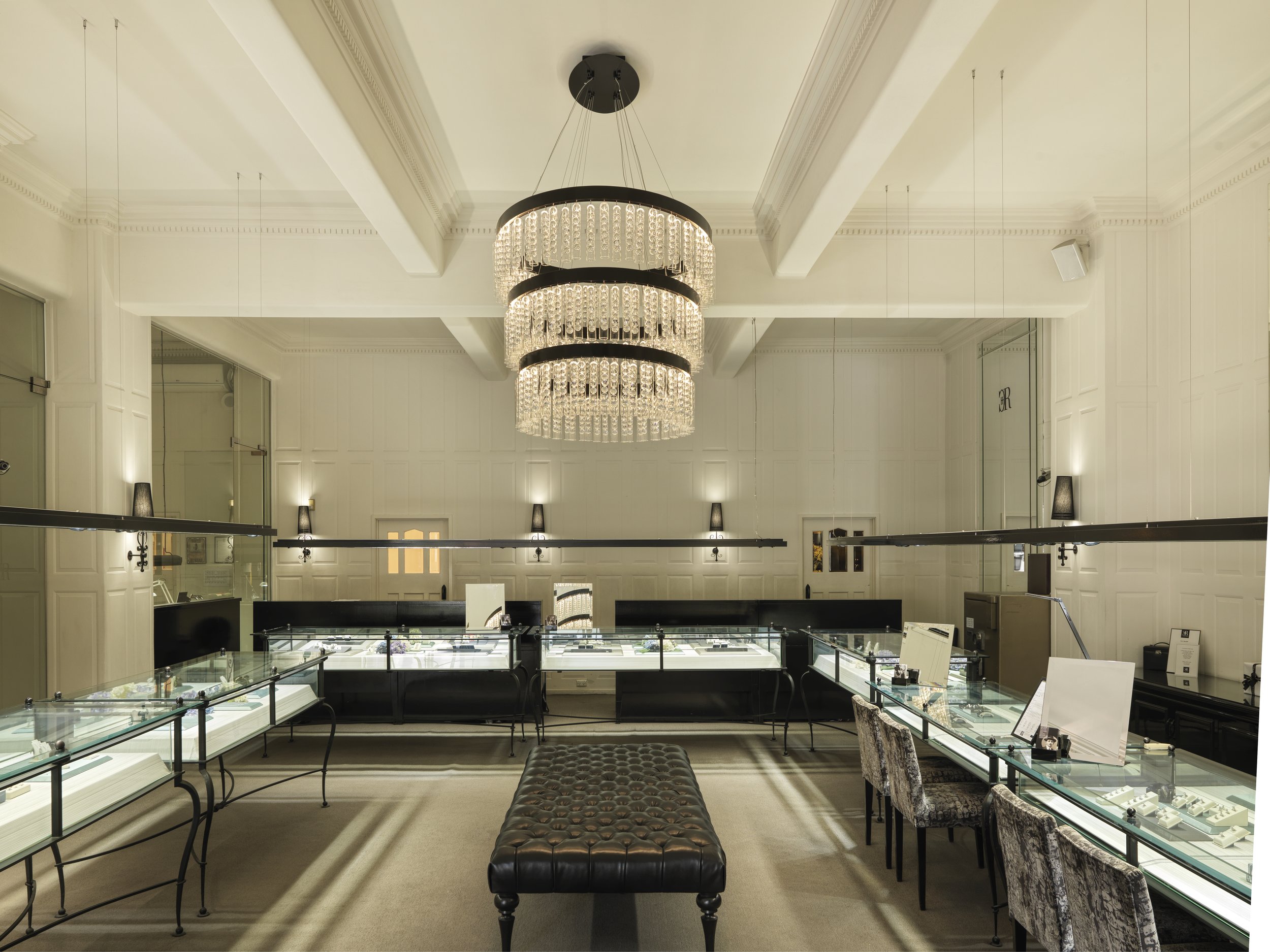Handcrafted Lighting
At the heart of ILANEL's success is a clear and compelling design philosophy - Bringing visions to light.
We aim to create lighting that illuminates, inspires, and captivates.
Our vision is to blend art and functionality, resulting in pieces that are both meaningful and practical.
This approach is evident in our commitment to custom design, where each piece is crafted to meet the specific needs and aesthetic preferences of our clients.
By combining innovative design with high-quality manufacturing, we ensure that every creation is unique.
From Concept to Completion
Handcrafted lighting is more than an artistic endeavour; it’s a testament to the skill and dedication of artisans who bring each fixture to life. Every piece is thoughtfully designed and meticulously crafted, offering a unique blend of aesthetic appeal and functionality that mass-produced options simply can't match. The journey from concept to completion involves high-quality materials sustainable practices and a close collaboration between designers, craftspersons and clients. The result is a lighting fixture deeply connected to the unique space it illuminates and its owners’s aesthetics.
Forging Falling Leaves
The charm of custom-made lighting lies in its ability to marry artistic vision with exceptional craftsmanship. Each fixture is a one-of-a-kind creation, offering an aesthetic appeal that is unmatched by off-the-shelf alternatives. Handcrafted lighting transcends mere functionality, elevating the ambience of any room and providing a deeper connection between the fixture and its environment.
When it comes to lighting, the choice between customised and mass-produced options is a choice between the extraordinary and the ordinary. Tailor-made lighting offers a depth of artistry and customisation that mass-produced products simply can't match. While mass-produced lighting focuses on efficiency and cost reduction, handcrafted lighting prioritises quality, durability, and visual appeal, creating a bespoke solution that enhances any space.
IDEATION
We draw inspiration from all walks of life, including nature, architecture, art, and our client’s vision. The organic forms and intricate patterns found in the natural world can influence my chosen design language. Similarly, the geometric precision, grand proportions and some fine details of architectural marvels along with the rich tapestry of cultural motifs provide a wealth of ideas translated into tangible designs. By drawing on these diverse influences, designers can create lighting solutions that are visually enchanting and contextually relevant.
Brainstorming is essential in turning creative inspiration into definite designs. This phase allows designers and their clients to explore various possibilities and refine their ideas into workable concepts. Brainstorming fosters collaboration and creativity, ensuring that each design is both innovative and functional.
Materials and Sustainability
The choice of materials used when creating custom lighting is critical, with options like glass, metals, and wood each offering distinct qualities. Glass can create soft, diffused light, while metal offers durability in various finishes. Wood adds warmth and a natural textural element to the design.
Sustainable materials are increasingly favoured to reduce environmental impact without compromising on quality. They play a vital role in handcrafted lighting, reflecting a commitment to environmental stewardship. By choosing materials like responsibly sourced wood and recyclable metals, artisans can reduce their ecological footprint while ensuring that each fixture is built to last. This approach not only benefits the environment but also adds a layer of uniqueness and authenticity to the final product.
The materials selected for a lighting fixture have a profound impact on its design, influencing both its aesthetic and functional qualities. Sustainable materials like reclaimed wood or recycled glass can add character and depth to a design, while also supporting eco-friendly practices.
Function and Aesthetic
Creating handcrafted lighting that is both aesthetically pleasing and functional requires a delicate balance. The design must integrate material selection, structural integrity, and innovative lighting techniques to ensure that the fixture is durable, functional and visually harmonious. The form of the lighting must complement the overall design of the space, creating a cohesive visual narrative.
Light quality and diffusion are critical elements in the design of lighting. The right diffusion can create a pleasing, comfortable environment, while the quality of light can significantly impact the mood and functionality of a space. Customised lighting must deliver balanced, consistent illumination that enhances its surroundings without causing glare or harsh shadows.
The know-how
The creation of handmade luminaries requires a unique blend of creativity and technical proficiency. The process requires a deep understanding of design, materials, and techniques, as well as the ability to visualise the illuminating outcome. Sound knowledge in metalworking, glassblowing, and woodworking is essential, along with proficiency in electrical wiring and awareness of safety standards.
The creation of handcrafted lighting involves a balance between traditional techniques and modern innovations. Mastery of hand-forging, glassblowing, and intricate metalwork is essential, but the integration of modern technologies like 3D printing and LED systems allows artisans to push the boundaries of design. This fusion of old and new enhances both the physical and aesthetic qualities of the lighting fixtures.
The Production Process
The production of handcrafted lighting is a detailed and methodical process. It begins with the conceptual phase, where ideas are sketched and technical drawings are created. Materials are then selected, and skilled artisans begin crafting the fixture.
Prototyping is a critical phase in the production process, allowing designers and artisans to test and refine their ideas. Multiple iterations of the prototype may be created, each bringing the design closer to perfection. This phase ensures that the final product is not only aesthetically pleasing but also functional and durable.
The final stages involve assembly, finishing, and rigorous quality control to ensure the fixture meets the highest standards of quality and functionality.
Testing new lighting technologies for the Seven Sisters Project
Blowing glass with Maureen Williams
Customisation and Personalisation
Customers can personalise their handcrafted lighting by selecting materials, finishes, and design motifs that reflect their individual style. This level of customisation ensures that each piece is not only functional but also a unique expression of the client’s aesthetic preferences.
Current trends in custom lighting designs reflect a growing demand for bespoke solutions that combine artistic flair with functional excellence. Artisanal craftsmanship, modularity, and sustainability are key trends, with clients increasingly seeking unique, personalised lighting solutions.
LUMINOSITY at CRAFT VICTORIA
Perceived through its interactions with objects and space, light is inherently relational. In Luminosity, four artists explore this quality through material practice. Drawing from a specialist understanding of their craft and deep material knowledge, each artist creates works that anticipate the behaviour of light, manipulating its unique properties and spectral effects. Works play with transmittance, refraction and reflection, capturing the emotive and sensory possibilities of light.
Where
Craft Victoria
Watson Place, VIC 3000
Wurundjeri Country
When
August 10, 2024, 11:00 AM — September 21, 2024, 4:00 PM














































